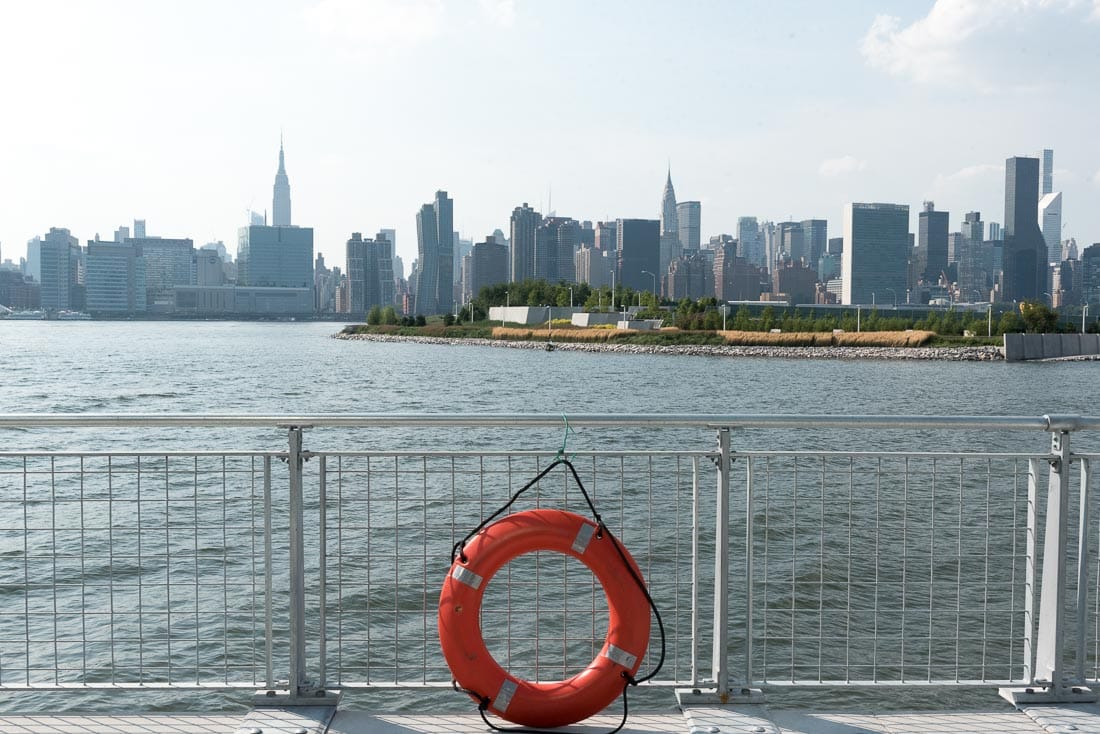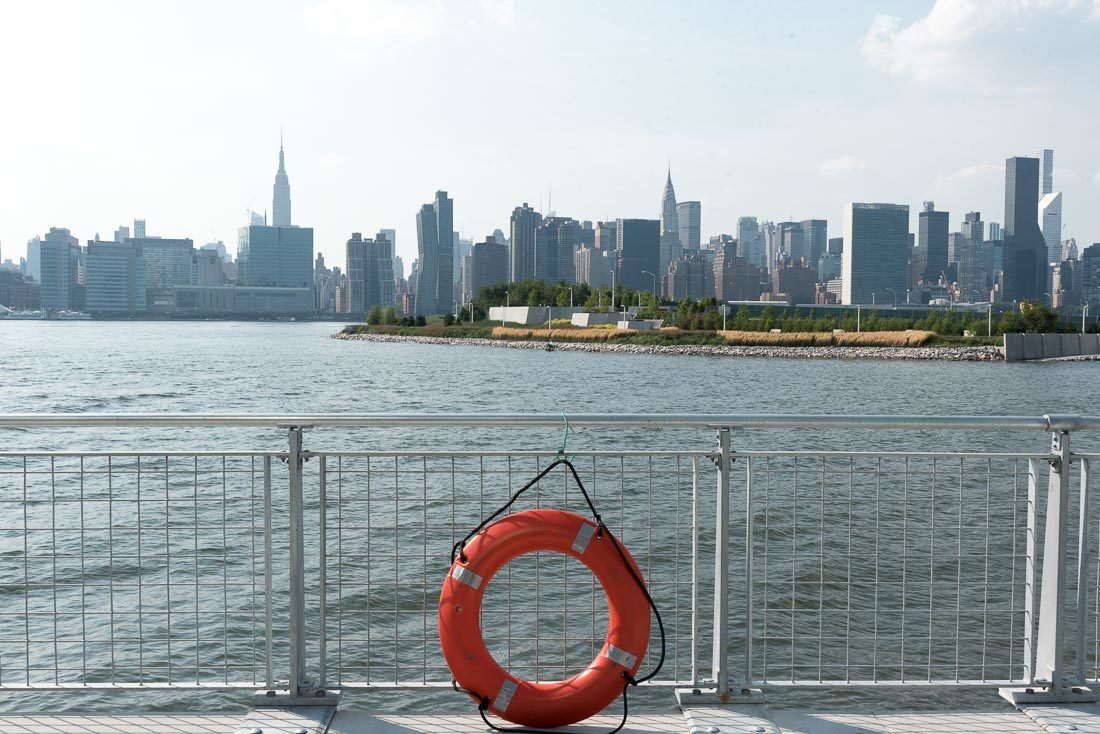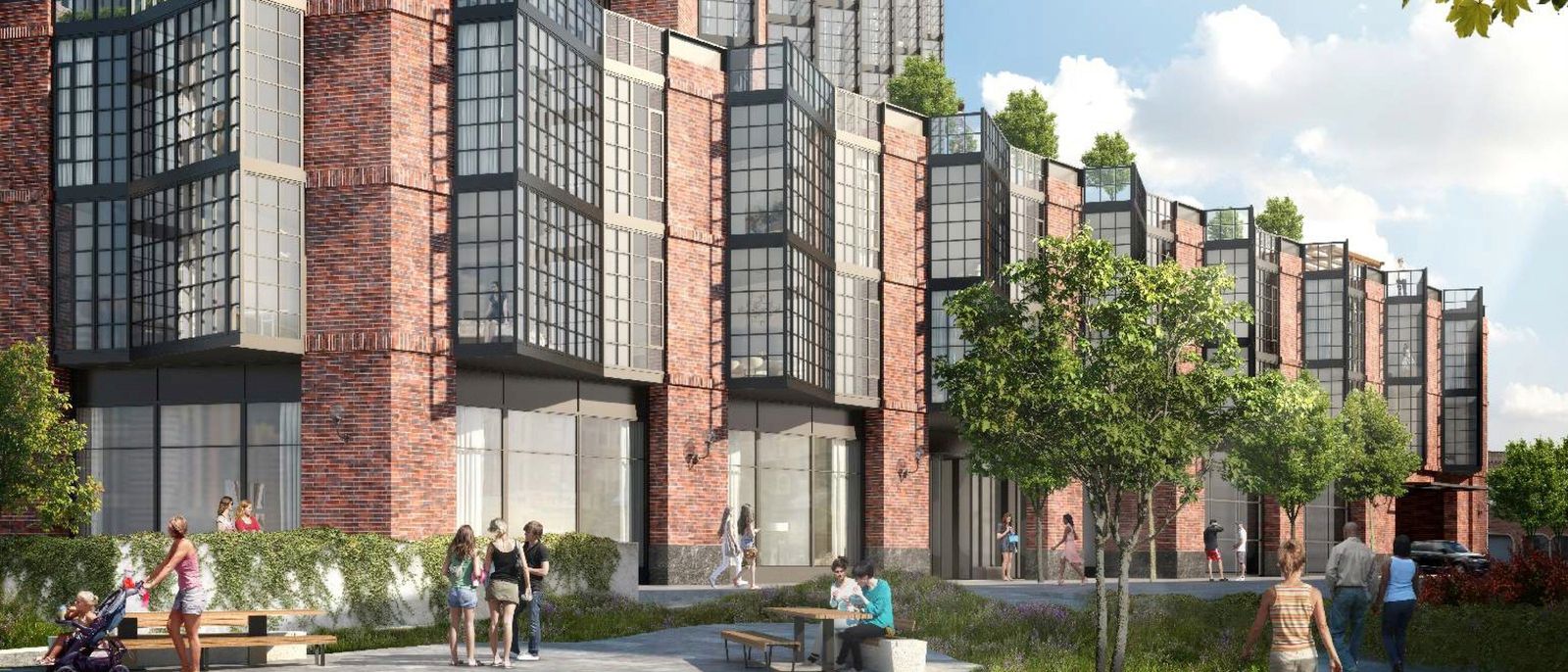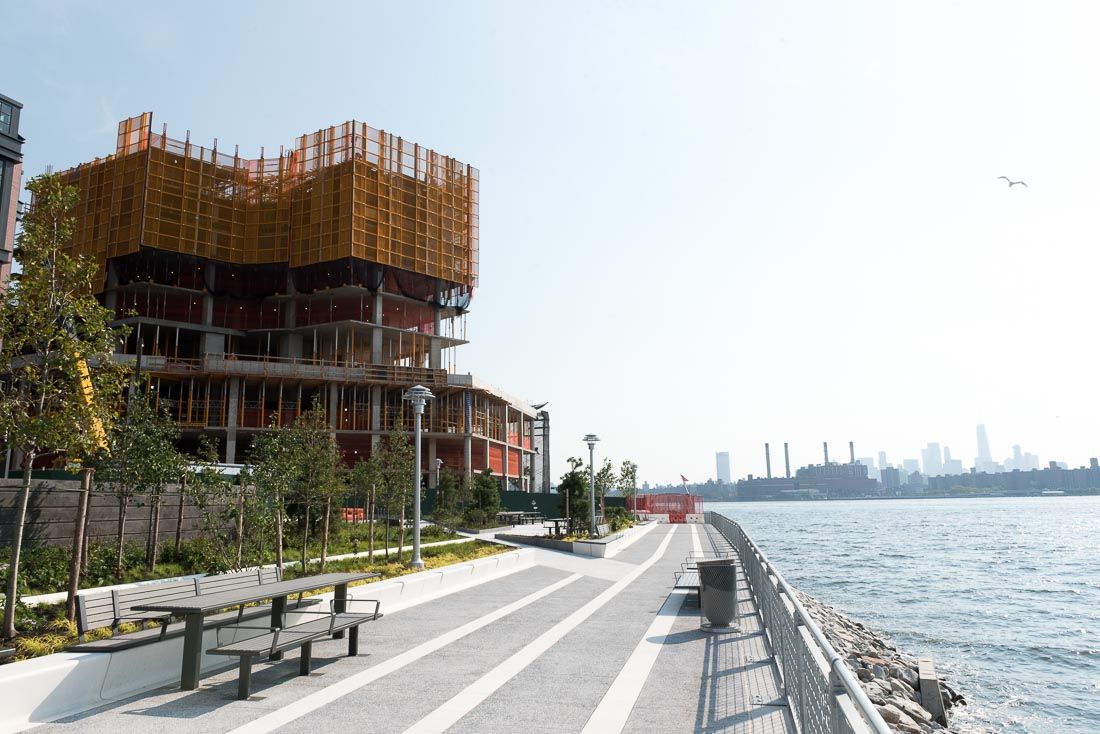Disappointed By Waterfront Development, Greenpoint Residents Look For Answers


GREENPOINT – This week, representatives from the Department of City Planning (DCP) met with residents in Greenpoint to explain the process of waterfront zoning with a presentation, an event organized by the office of local Councilmember Stephen Levin (D-33), in response to new scrutiny of and public engagement with the process in the last six months.
The reason for the new attention? Some of the first development projects along the waterfront are being finished, their esplanades and green spaces opened to the community—and residents aren’t thrilled with the results.
“Confusion” and “betrayal” were two of the words most commonly used by residents at last week’s meeting, who felt they were getting shortchanged with the designs being implemented. Instead of kayak launches or shoreline interaction between pedestrians and the water, the bare minimum bulkhead walls and railings are going up above the East River, while the seating, pathways and plantings pale in comparison to other waterfront design.

During the rezoning in 2005, the DCP’s restrictive guidelines for waterfront design were loosened in the case of the Greenpoint Williamsburg project, theoretically to allow for more design-forward construction and creativity during development the public access portions of the miles-long front, which runs from the Navy Yard to Newtown Creek.
Instead of being restricted to the mandated basics, for example, developers would have options for public interaction with the water’s edge, whether through riprap shore or an access point like a get-down were included in the new guidelines. (Later, in 2009, these new design guidelines would be adopted city-wide.)
While some sections of the waterfront have been designated for city-run parks, like Bushwick Inlet and Box Street, the preponderance of waterfront construction fell to the developers bringing high-rise luxury residences to the shoreline. And so far, residents say they’ve seen little of these increased amenities as new sections of privately-constructed waterfront open.
Because even if the text amendment from 2005 allows for “more design,” beyond the basics, DCP representatives told the community this week, it certainly doesn’t require it.
When asked about their oversight of the design process, DCP representatives repeatedly said they “strongly encourage” developers to create more amenities or explore more ambitious design. However, the DCP has no power to incentivize or penalize developers who merely adhere to the basics—if the plan checks all the boxes, it gets approved.
When the Greenpoint Landing project at One Blue Slip opened its esplanade to the public this summer, neighbors who had been involved since the rezoning were underwhelmed by the sterile, basic design.


Across Newtown Creek, the bold design of Hunter’s Point South taunts residents looking across from the concrete platform and composite benches. A Parks representative was quick to caution that the Hunter’s Point project was a city-funded affair, not a developer’s project, but the comparison is stark.
Much like the concessions made to construct affordable housing—attached to the flashy waterfront complexes in basic boxes of units—the public access and esplanade development requirements seem to have been completed in a rather perfunctory manner.
Of course, some sections further down the waterfront have been well-received, like Domino Park, but residents are worried about what the future holds as more towers rise quickly in Greenpoint and long-since approved plans are put into action.
Councilmember Levin expressed his doubts for change at the meeting, unsure of a way “to make options requirements in the next six months,” he said. Instead, he encouraged the community to “speak with one voice” about their collective expectation of what constitutes acceptable design.
“It’s my regret I didn’t get on this message years five years ago,” Levin said. With a nod towards hope, the councilmember did say he met with a developer recently, and that the plans he reviewed were worthy of the community’s expectations, even if he didn’t name which developer or location outright.
Hopefully, the soon-to-open section of esplanade at 420 Kent, which recently passed a Parks Department safety inspection, will prove satisfactory to the community and serve as an example to future developments, before too much of the concrete sets.




